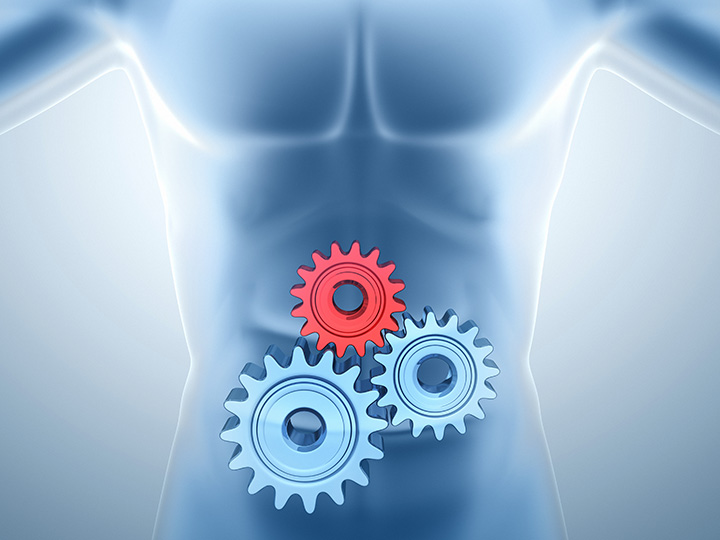Protein Digestion / Absorption Rate

When one is serious about gaining muscle mass, they often look to the amount of protein they are consuming as a way to facilitate muscle growth. The general rule a lot of people follow is that the body can only digest 30g of protein at a time. This is not true. The body can digest about as much protein as one can consume in a sitting, it just takes more time to digest. The true limitation arises from how much of that protein is actually utilized by the body. Learn more about daily protein intake amounts and the factors that affect how much protein the body can actually utilize.
How is protein digested/absorbed?
The process of protein being broken down into amino acids is a fairly complex one but understanding this process will yield greater insight into how the human body functions. When protein is ingested, it is chewed (saliva does not affect protein breakdown like it does carbohydrates), prepping it for further breakdown once it reaches the stomach. The hydrochloric acid in the stomach breaks the protein apart from the rest of the food. The protein is then sent to the upper region of the small intestine where the pancreas containing mucosal cells breaks the protein apart into peptides and amino acids. This process is known as hydrolysis and is performed by the enzyme called pepsin. The amino acids are then used to build muscle tissue and repair damaged cells which is often the result performing a series of weight lifting exercises.
This process can be affected by what is known as malabsorption. It is a condition where the small intestine cannot absorb nutrients from food. This is not a very common condition and affects a small percentage of the population.
Factors that affect protein digestion/absorption rates
The amount of how much protein the body needs and how much it can digest/absorb are two totally different elements. What many individuals fail to realize is that several factors affect the body's protein digestion/absorption rate. These factors include:
- Concentration levels of the enzyme pepsin
- How much protein is present at once
- The acid levels of the food and stomach (this can be diluted with water consumption)
- Antacids or other digestion inhibitors
- Amount of chewing that occurred before the food reaches the stomach
It is important to keep in mind that while there is no hard limit to the amount of protein that can be digested/absorbed, the utilization of protein is what is important. If you are not active, your body will not use it.
Side effects of protein metabolism
The breakdown of protein results in two types bodily waste: non-nitrogenous and nitrogenous. Non-nitrogenous waste is combination of carbon dioxide and water. Nitrogenous waste is referred to as urea, uric acid, creatinine, and hippuric acid. Urea makes up the majority of these types of waste products. It is advised for those on a high protein diet to drink ample quantities of water to aid in the excretion process of this nitrogen based waste via the kidneys.
Sources:
Protein absorption: D. M. Matthews, Department of Chemical Pathology, Westminster Medical School, London - http://www.ncbi.nlm.nih.gov/pmc/articles/PMC1176257/



